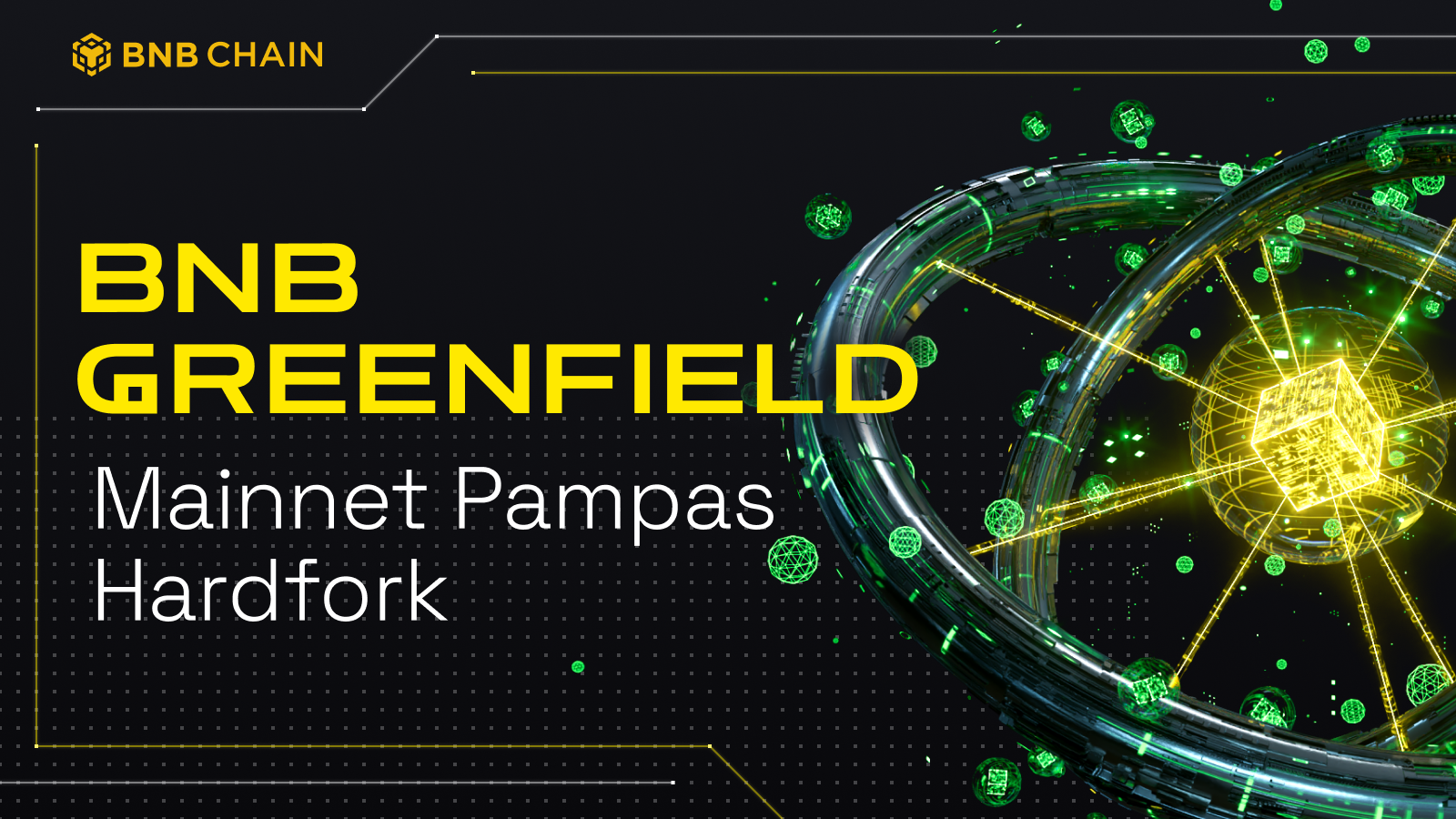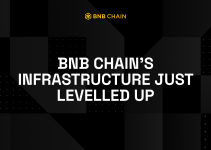Table of Contents

BNB Greenfield is undergoing the Pampas upgrade for the Mainnet version to v1.1.1. The Pampas upgrade takes place at block height 2,006,197, estimated to be on December 4th at 07:00 AM UTC based on the current block generation rate.
Please be aware that the upcoming hardfork will not impact your account balance on Greenfield. All buckets and objects stored on the Greenfield Mainnet will remain accessible.
What’s new for BNB Greenfield?
To enhance user experience, the developer community is introducing the following features and improvements:
- Support for rejecting bucket migration (PR #493)
- A hardfork for linking to opBNB (PR #504)
- Enhanced storage provider (SP) query method by shuffling the results (PR #520)
- Disabled SP exit and bucket migration messages (PR #521)
For other bug fixes, and refactoring, please refer to the changelog in the Greenfield Blockchain repository.
For Greenfield validators, there are two important changes to note in order to support cross-chain functionality between Greenfield and opBNB:
- Add the following content to the `cross-chain` section in the `config/app.toml` file:
“`plaintext
# chain-id for op bnb destination chain
dest-op-chain-id = 204
“`
- You must run an additional relayer for facilitating cross-chain communication between Greenfield and opBNB. Ensure that the relayer account on opBNB has sufficient funds to submit cross-chain transactions.
These changes are necessary to enable seamless communication and interoperability between the Greenfield and opBNB networks.
What’s new for Storage Providers?
- A DataMigrationRecord table has been added to allow for the saving of process records for data migration tasks (PR #1240)
- Introduced SP health rating for selecting of SPs (PR #1218).
- Signer module now includes metrics for each RPC interface (PR #1237).
- Implemented the reject bucket migration feature (PR #1227).
- Added ‘gnfd’ command to query sq incomings (PR #1224).
- Updated storage size for bucket APIs (PR #1223).
- Improved quota for bucket migration (PR #1118).
- Added HTTP probe to improve service stability (PR #1201).
- Updated recover object command for Kubernetes job (PR #1207).
- Added Golang runtime metrics, process metrics, and std lib DB metrics (PR #1197).
- Added error code in HTTP metrics to help locate problems (PR #1167).
For other bug fixes, and refactoring, please refer to the changelog in the Greenfield SP repository.
What to do if you are unable to upgrade Greenfield in time
Since this is a hardfork, your `gnfd` binary cannot continue running if it’s not upgraded in time.
Add the following filed in `app.toml`:
“`
# chain-id for op bnb destination chain
dest-op-chain-id = 204
“`
Stop the binary, then execute the rollback command:
“`shell
gnfd rollback –hard
“`
Finally, restart your binary.
Use Greenfield with opBNB
The integration of opBNB with Greenfield brings benefits in terms of cost-effectiveness, faster transactions, and improved cross-chain communications.
- Cross-Chain Communication: opBNB enables cross-chain communication between Greenfield and itself. This is a significant advantage as it allows Greenfield to leverage the benefits of opBNB’s platform, including lower gas fees and faster cross-chain transactions.
- Lower Gas Fees: Greenfield currently relies on another EVM-compatible L1 chain for programming, which may result in elevated cross-chain fees. By connecting to opBNB, Greenfield users can enjoy much lower gas fees (approximately one-tenth of the fees of BSC), leading to greater cost-effectiveness.
- Faster Cross-Chain Transactions: opBNB achieves one-block finality in most cases, making cross-chain communication significantly faster compared to BSC, where relayers need to wait for at least two blocks (6 seconds) for finality. This faster finality on opBNB enhances the user experience on Greenfield.
Conclusion
The BNB Greenfield Pampas Hardfork is part of BNB Chain’s ongoing commitment to delivering a seamless and efficient platform for users. The updated platform better serves users by addressing bugs, introducing new features, and responding to community feedback.


